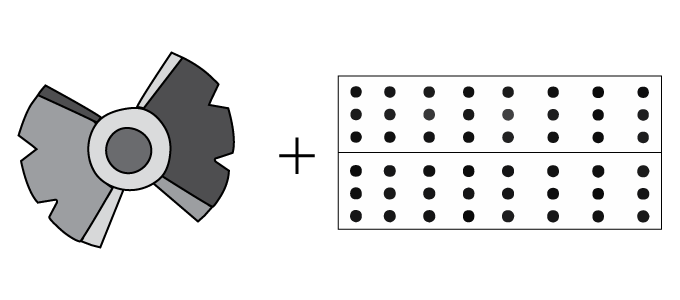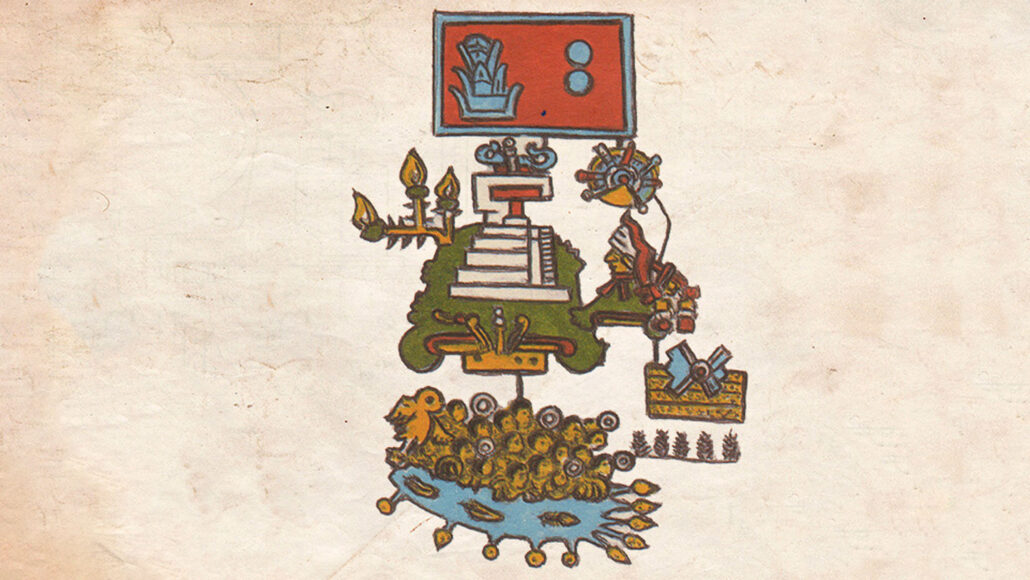"The written chronology in a 16th century codex was created by a pre-Hispanic civilization.
It is one of the oldest-known records of an earthquake which occurred in Mexico in 1507
(see below).
The earthquake is represented by the symbol (to the middle, right)
composed of four dotted yellow rectangles representing the layers of
the earth) overlain by four helices (in blue and white) with a red eye
at the center. The pictogram also describes one impact of the quake
--the drowning of 1,800 warriors in a river (bottom).
A 50-page codex of colorful, complex pictograms that dates to the early 16th century includes the most complete (and one of the oldest ) written chronologies of early earthquakes in the Americas.
The Telleriano-Remensis, which was created by an unknown pre-Hispanic civilization, describes twelve separate earthquakes that shook in what is now Mexico and central America from 1460 to 1542 researchers report in the August 25, 2021 issue of Seismological Research Letters. The famous codex was written by specialists called tlacuilos, meaning “those who write painting” in the Nahuatl language spoken byAztecs and other pre-Hispanic civilizations in the area (Science News, March 13, 2020).
Using other codices from the region, researchers had previously identified the combination of two pictographs that denotes an earthquake. One shows four helices around a central circle or eye, and stands for ollin, meaning “movement” in Nahuatl. The other pictograph shows one or more rectangular layers filled with dots, and means tlalli, or “earth.” For daytime earthquakes, the eye is open; for nighttime quakes, it’s closed.

Seismologist Gerardo Suárez of the National Autonomous University of Mexico and social anthropologist Virginia García-Acosta of the Center for Research and Higher Studies in Social Anthropology, both in Mexico City, pored over the Telleriano-Remensis. The researchers were looking for representations of quakes, comparing what they found to accounts of quakes in other pre-Hispanic codices and texts written later by Spanish friars.
The Telleriano-Remensis uses a pictorial representation of a 52-year cycle to roughly date the quakes. Years are represented by these four signs:
tecpatl (knife),
calli (house),
tochtli (rabbit)
and acatl (reed)
which are arranged in thirteen permutations. Those images helped the researchers match some pictorial accounts of quakes, including one in 1507, to later descriptions of the events.
Little more is recounted about the precise locations of these quakes or the damage they caused, although one image suggests that a quake triggered flooding that drowned several warriors. Other codices may contain more clues, the researchers say, which could help create a more complete chronology of the quakes that shook this part of the Americas."
Knife, house, rabbit, reed?
Codex Steph










